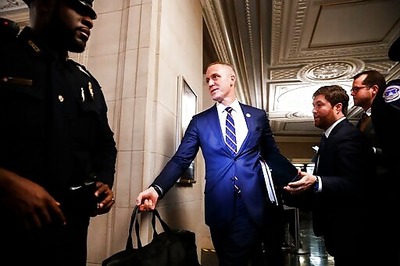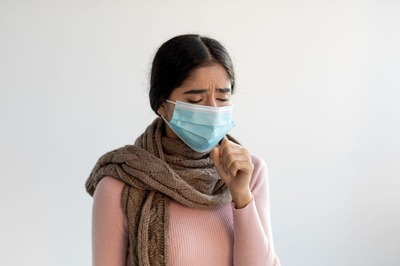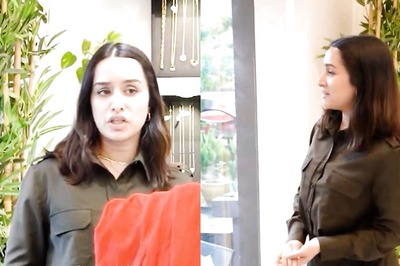
views
I begin with a simple game for readers, to solve a simple puzzle that I have been putting to listeners of my talks in recent months. It is an innocuous question, what do the capital of seven kingdoms, Delhi, the second most populous city of the world (to be most populous around 2028) and the capital city of India have in common with-
“The tiny Bihar hamlet Asopur (population 2857), mufassil town Dharuhera (population 41,000) colloquially Haryana’s most prosperous region, Chapra an impoverished district town in Bihar (278,000 population) which got into prominence as famous 18th-century river mart where Dutch, French, Portuguese, and British established saltpetre refineries, Uttar Pradesh city Ghaziabad (population 2,273,000) founded in 1740 A.D. by Ghazi-ud-Din II, a wazir in the court of Mughal emperor Muhammad Shah and the ancient city of Patliputra (modern Patna with 2,580,000 population) that scripted the history of India from 490 BC to 600 AD.”
Most erudite listeners including premier management school students and a group of corporate honchos, answered- “centres of organised crime.”
The answer is farthest from the complicated existential truth of these places. It is not even half-truth. As per the March 2023 report of the Swiss agency IQAir, these six places in India ranked amongst the top 10 most polluted places in the world in 2022.
Make no mistake, as per IQAir, between 2017 and 2022, the most polluted city ranking based on annual average deadly killer PM2.5 concentration (μg/m³), Delhi NCT ranks fourth worst city and most-polluted capital city in the world. And the pollution in Delhi now worsens by month and not the year.
Delhi Chief Minister Will Have a Different Take
Knowing Delhi Chief Minister Arvind Kejriwal, he will produce a different set of data saying that as of October 27, 2023, 0017 hours AQI data, the pollution in Delhi with 202 μg/m³ PM 2.5 has substantially improved and it is the 10th worst in India with the two worst polluted cities of India today being Ujjain (PM 2.2 249 μg/m³) and Bhiwadi (243 μg/m³). He will pat his minister and the ‘Green War Room’ for improving Delhi’s air pollution from the “very poor” to the “poor” category in just three days. What Kejriwal will conveniently not tell is that on October 27, 0017 hours, Delhi’s PM 2.5 concentration was close to 9 times the recommended limit of WHO 24-hour air quality guidelines value. And in 2022, it was 18.5 times.
It is Not Yet Winter
Typically, the air pollution in Delhi is at its worst in the winter starting from Diwali days. This year, the mayhem has started well in advance. On Monday, October 23, the level of PM 2.5 — fine particulate matter that can clog lungs and cause a host of diseases — was 306 in Delhi, and even in the wee hours on October 27, it was 206. For the uninitiated, PM2.5 levels of 101 and 200 are considered moderate while those between 201 and 300 are categorised poor. Anything over 300 is categorised as “very poor” and a figure higher than 500 is considered “severe”.
GRAP is Passe
The Graded Response Action Plan (GRAP) is a set of emergency measures that are implemented when air quality begins to dip in Delhi-NCR in the winter months. The GRAP was first notified in January 2017 by the Ministry of Environment, Forest, and Climate Change under the direction and scrutiny of the Supreme Court. This was based on a plan submitted by the Central Pollution Control Board (CPCB) in November 2016. Originally, the now-dissolved Environment Pollution (Prevention and Control) Authority for the NCR was responsible for its implementation. From 2021 onwards, the GRAP is being implemented by the Commission for Air Quality Management.
GRAP is incremental and thus, when the air quality dips from ‘poor’ to ‘very poor,’ measures listed under both sections have to be followed. Stage 1 of GRAP is activated when the AQI is in the ‘poor’ category (201 to 300), Stage 2 is when it’s in the ‘very poor’ category (301-400), Stage 3 is when the AQI is in the ‘severe’ category (401-450) and finally Stage 4 is when it rises to the ‘severe +’ category (more than 450).
In the first stage of GRAP, the government imposes heavy fines on garbage burning and sweeping without sprinkling water. The action also includes sprinkling water on roads with heavy vehicular movements. It also includes among other things stopping the construction and demolition activities on plot sites of 500 square meters and more which have not been registered on the dust mitigation monitoring portal.
The second stage of GRAP was introduced earlier this week when PM2.5 level crossed 300. It necessitates a ban on diesel generators, increased parking fees, increased bus and metro frequency and issuing advisories for children, elderly, and people with respiratory problems to remain indoors.
Without bothering readers with the third stage, the fourth and final phase is enforced when the air quality enters the ‘severe plus’ category. This happened in November last year and is very likely to happen this year, next year and next to next year. In such an emergency, like last year, GRAP implementation suspends all construction works, heavy vehicles are stopped from entering Delhi’s borders, all vehicles other than Bharat VI compliant are ordered off the road and schools are shut down.
I have no compunction in saying that Delhi-NCR’s way of combating the worsening air pollution is shutting down activities one by one till everything comes to a grinding halt. And the same story is repeated every year, duly forgetting the deleterious impact on the economy of the city, due to shutting down the engine of growth.
The New Normal Subnormal
It is a myth that the Delhi-NCR pollution is a winter crisis. Various studies and the raw data of the Central Pollution Board are eye-openers. Pollution is a yearlong problem, and residents of Delhi-NCR hardly experience “good” or “satisfactory” air day. Covid lockdown was a temporary circumstantial god-sent reprieve. Hard data tells a new normal subnormal story. The data also reveals there’s much more to worry about than the government does. Any keen observer of CPPB data will tell that in the first five months of 2022, Delhi recorded a total of 114 days that clocked air quality in the severe, very poor, and poor categories. In only 37 days, Delhi had either satisfactory or moderate air quality. Worse, Delhi citizens did not even have a single day of “good” air quality. The last seven months of the year were far worse. What use GRAP is? Air pollution continues to kill whether Delhi runs, crawls, or stops living under the weight of GRAP.
I will return to the Delhi story a while later. Suffice to say at this stage, that:
One, India’s national air quality standards are much more lenient, even compared to WHO’s 2005 norms. For example, the recommended PM2.5 concentrations over 24 hours are 60 micrograms per cubic metre, compared to 25 micrograms advised by WHO’s 2005 guidelines. But even these lower standards are hardly met. WHO in 2021 made its guidelines stricter for all pollutants. For example, for PM2.5, the prescribed 24-hour mean is 15 micrograms per cubic metre and one year mean is 5 micrograms per cubic metre. Meeting them is a far cry for the nation.
Two, Delhi can bask in the temporary glory of reducing air pollution from very poor to poor level. But the truth beckons if one does not monitor air pollution, the extent of the manifest problem will also be less than the reality. The whole Green War Room story of the Delhi government (started in 2020), having 17 experts now and (compared to nine last year) with state-of-the-art equipment, functioning round-the-year with the 24X7 monitoring is misplaced. It is an eyewash, to say the least. Delhi is not required to monitor and mitigate pollution by making the city come to a standstill, rather it is in crying need of drastic action to reduce the pollution.
India is no Better
How do other Indian cities fare? The short answer is “as bad”. IQ Air March 2023 report which surveyed pollution in 7300 cities has three major damning observations.
One, India ranked amongst the ten worst polluted countries in the world, precisely the eighth most polluted country in 2022, dropping from fifth place the previous year.
Two, six Indian cities are in the top 10 most polluted, 14 in the top 20, 39 in the top 50, and a staggering 65 in the top 100, up from 61 in the previous year. It is pertinent to note that as per the Central Pollution Control Board’s (CPCB) list of Continuous Ambient Air Quality Monitoring Stations, Delhi-NCR shows a total of 80 stations. Of these, half, that is 40 stations, are in Delhi grossly insufficient for the 1,258 sq. km area of NCT. Other cities, particularly tier 2, 3 and smaller towns are in blissful ignorance, no measurement, no pollution.
Three, the economic cost of air pollution in India is $150 billion, with the transportation sector causing 20-35 per cent of the PM 2.5 pollution. Other sources of pollution are industrial units, coal-fired power plants and biomass burning.
Make no mistake, presently about 80 per cent of the urban population is exposed to air quality that does not meet the CPCB ambient air quality standard for PM10 (60 μg/m3), a standard that is substantially lax when compared to WHO standards.
The Great Indian Tamasha
As per available data, India has around 800 operating stations in 344 cities/towns in 28 states and 7 Union Territories of the country under the National Air Monitoring Programme (NAMP). There are 261 continuous Ambient Air Quality Monitoring Stations in 134 cities covering 23 states and Union Territories connected to the web-based system providing real-time ambient air quality details. It is pertinent to point out that most of these monitoring stations are in urban areas, more particularly in metropolitan cities. Smaller cities have 1-2 continuous monitoring stations and few undependable manual air quality stations. There are no ambient air quality monitoring stations available in rural areas.
Maila Aanchal
Such travesty of Ma Bharti reminds me of the famous Hindi novel Maila Aanchal by Phanishwar Nath Renu. As per the World Air Quality Report 2022, air pollution has a massive impact on human health in India. It is the second biggest risk factor for disease, and the economic cost of air pollution is estimated to exceed $150 billion annually. The World Health Organisation estimates that air pollution in India is responsible for over 1.2 million deaths each year. Another study puts the Indian deaths due to air pollution at an estimated three deaths every minute in addition to heart and lung diseases and many other diseases. The Central and state governments may contest the veracity of the number, but the real cost to life is humungous and possibly scarier than what transpires. What we know may just be the tip of the iceberg.
When dirty polluted air blankets our cities, the most vulnerable urban populations — the youngest, oldest, ill and the poorest — are the most impacted. At the alarmingly dangerous level of air pollution that Indian cities exhibit today, those most at risk include children whose lungs are in formative, the elderly, and the unwell, especially those with asthma, Chronic Obstructive Pulmonary Disease (COPD) cancer, heart disease and diabetes among other diseases.
There is a Better World Out There
As per a 2023 Air Quality Life Index report of the University of Chicago’s Energy Policy Institute (EPIC), an average Indian loses 5 years of life due to air pollution. The worst is Delhi where an average resident loses 11.9 years of their lives on an average to air pollution. The number is 11.2 years in Gurugram. It is a humungous number. And for any sane nation, even one year of life lost to pollution is one too many. Instead of taking shelter under our geographical limitations and hostile climate, it is ‘Wake Up Sid’ time for India.
And I humbly posit that there is a better world out there as can be seen from the instructive list of the 100 least polluted cities of the world. It is an interesting mix of cities from developed and developing countries and is represented by all major regions of the world, including central Asia and Africa. The solitary exception is South Asia which has 73 most polluted cities out of the 100 worst in the world but not even one in the list of 100 least polluted. All major nine Australian cities made the cut of the least polluted cities.
My humble submission for why no Indian or South Asian city makes the cut of the 100 least polluted cities is- one, it is stupid poverty and two, the lack of political conviction. It is time that the paradigm of governance changes. India has to become less polluted before it becomes developed. Pollution need not be the by-product of the process of development.
The CHINDIA Story
I return to my popular theme. In 2008, at the time of the Beijing Olympics, there was not much to choose between Delhi and Beijing. Both competed to have some of the dirtiest skies in the world. Millions enveloped by the darkest smog on bad days was the order of the day and bad days were too many.
Then came the frontal attack by China, spearheaded by Beijing. What changed was that the Chinese government declared a war against pollution in 2013, and Beijing pressed ahead with a multiyear $100 billion effort to clean its air. The authorities clamped down on factories, forced old vehicles off the road and shifted from coal to natural gas, electricity and now are moving to green hydrogen. While Beijing has not become the cleanest city in the world, it is no longer among the dirtiest. In 2022, Beijing residents breathed good or moderately good air for 288 days, 12 days more than in 2020, according to data released by the authorities. The piece of news might have been shrugged off by many as trivial but for Beijing’s more than 20 million residents, it is a precious gift.
This is a pipe dream for Delhi.
I will take just two leaves from Beijing and China-
One, geographically, Beijing suffered for decades from air pollution due to frequent sandstorms from the north and northwest and the region’s industrialisation. China reduced the intensity and number of sandstorms by planting billions of trees in the north and northwest of Beijing.
Two, China has today 9500 km of operational metro rail constructed during the same period in which India has put together 900 km. Every year, it is adding 2500-3000 km. Its 2035 target is 35000 km of metro rail. Nearly ten Chinese cities including Beijing will have more than 1000 km of metro rail by 2025. Shenzhen has converted its entire fleet of 16000 buses to electricity. Beijing is almost there. Delhi by 2028 will cross Tokyo with 38 million population. After 391 km of Metro Rail in Delhi-NCR, governments have developed cold feet and all that has been sanctioned in the last five years for Phase II is 65 km.
Delhi is an urban sprawl and is soon to be the most populous city. In Phase II, DMRC constructed 123 km in 3.5 years almost at the same speed as Beijing. And then it slowed down. Now it is just trickling. It is neither good economics nor good politics. It is time to look beyond.
I believe what Beijing can do; Delhi can do better. And DMRC did it in Phase II.
A Sad Story
Even one life lost due to pollution is too much. Even one death due to it is culpable homicide. Those who can change India for the better, if their family and children take the same dirty air, they will have the urge to change the world if one member of the family is affected. For the last two months, I have been traversing Indian cities inhaling polluted air of different metropolises and have a flare-up of Chronic Obstructive Pulmonary Disease (COPD), a dangerous degenerative lung disease partly attributable to a few cigarettes that I smoke due to my obsessive-compulsive manic-depressive mind, but my pulmonary expert puts the biggest needle of suspicion on fifteen years of dirty Delhi air that I inhaled. I shifted from Delhi to the serenity of Pune to save myself from dirty air, but pollution quickly caught up with me there too.
My COPD is in stage II. Stage III is oxygen support and stage IV is ventilator support. I may not have many years left, but God save my India. No cost is high to wage total war on absolute pollution reduction, but the first thing is to know the truth and accept it. Only when we make our pollution norms stringent, we will know the real extent of the problem. No shortcut, short-term solution will do. India needs a concerted two-and-a-half-decade war to ensure its air is far less dirty when we celebrate a hundred years of independence.
Akhileshwar Sahay is a Multi-Disciplinary Thought Leader with Action Bais and India Based International Impact Consultant. He works as President Advisory Services of the consulting firm BARSYL. Views expressed in the above piece are personal and solely that of the author. They do not necessarily reflect News18’s views.




















Comments
0 comment